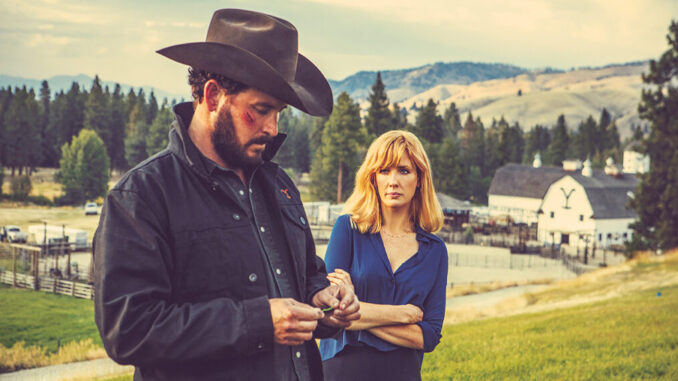
Beyond the Dust Devils and Dutton Drama: What's Really Happening Behind the Scenes of Yellowstone Season 5
Yellowstone, that sweeping saga of land, legacy, and the ruthless Dutton family, has captivated millions with its breathtaking vistas, complex characters, and enough twists to make a rattlesnake dizzy. But beneath the Stetson-wearing swagger and dramatic showdowns of Season 5, lies a more nuanced, and arguably more compelling, narrative unfolding. It's a story not just of cattle and cowboys, but of evolving landscapes, shifting power dynamics, and the delicate dance between tradition and modernity. To truly understand what’s happening behind the scenes of Yellowstone Season 5, we need to look beyond the obvious conflicts and delve into the subtext of its portrayal of the West.
Firstly, Season 5 subtly explores the fragmentation of the Dutton legacy. We see John Dutton, now Governor, clinging to the past with an iron fist, trying to preserve a way of life that is increasingly anachronistic. Yet, his children are pulling in different directions. Beth, ever the loyal protector, continues to defend the ranch with her signature brand of ruthless pragmatism. But even she struggles to reconcile her loyalty with the changing realities of the political arena. Jamie, forever torn between his ambition and his twisted sense of duty to John, becomes a pawn in a larger game, highlighting the internal rot that threatens to dismantle the Dutton empire from within. Kayce, haunted by his visions and his obligations to the Broken Rock Reservation, grapples with the moral ambiguities of the Dutton way, seeking a more sustainable and equitable path. This fracturing represents more than just familial discord; it symbolizes the disintegration of the old West ideals in the face of a modernizing world.
Secondly, Season 5 shines a spotlight on the escalating tension between conservation and development. The narrative is increasingly driven by the conflict between John's desire to protect Montana's natural resources and the insatiable appetite of corporate interests and the tourism industry. This isn’t simply about preserving open spaces; it’s about controlling the narrative and the future of the state. John’s gubernatorial actions, while often driven by a genuine desire to protect the land, are also fueled by a fear of losing control, mirroring the anxieties of a generation watching their way of life disappear. The constant threat of land grabbing and resource exploitation serves as a potent metaphor for the ongoing struggle between environmental stewardship and the economic pressures of a rapidly changing world. The series subtly raises the question: can the Duttons, and by extension the West, truly reconcile its history with the demands of the present?
Furthermore, Season 5 delves into the complexities of power and its corrupting influence. We witness John Dutton using his authority as Governor to manipulate the system in his favor, often blurring the lines between justice and self-preservation. This raises profound questions about the nature of leadership and the seductive allure of absolute power. The series doesn't shy away from portraying the darker aspects of John's character, highlighting the moral compromises he makes in the name of protecting his family and his land. This exploration of ethical gray areas forces the audience to confront the uncomfortable truth that even the most well-intentioned individuals can be corrupted by power. The narrative suggests that the Duttons, like the land they fight for, are not immune to the destructive forces of greed and ambition.
Finally, behind the bravado and the bloodshed, Season 5 reveals a desperate yearning for connection and belonging. The characters, despite their hardened exteriors and often violent actions, are ultimately driven by a desire to belong and to protect the things they hold dear. The familial dysfunction, the betrayals, and the sacrifices are all born out of a deep-seated fear of isolation and loss. Even the antagonists, driven by their own ambitions and grievances, are seeking a sense of purpose and validation. This underlying theme of connection provides a counterpoint to the surface-level violence and drama, reminding us that even in the most rugged and unforgiving landscapes, human connection remains a fundamental need.
In conclusion, while the horseback chases and explosive confrontations of Yellowstone Season 5 provide ample entertainment, the real drama unfolds in the spaces between the action. It's a story about the erosion of tradition, the tension between progress and preservation, the corrupting influence of power, and the enduring human need for connection. By looking beyond the surface, we can see that Yellowstone is not just a modern-day Western; it's a reflection of the complex and often contradictory forces shaping the American West today, forcing us to confront the challenges of preserving a way of life in a world that is rapidly changing. The dust devils swirling across the Montana landscape mirror the turmoil brewing beneath the surface, a reminder that the future of the Dutton ranch, and the West itself, remains uncertain.
